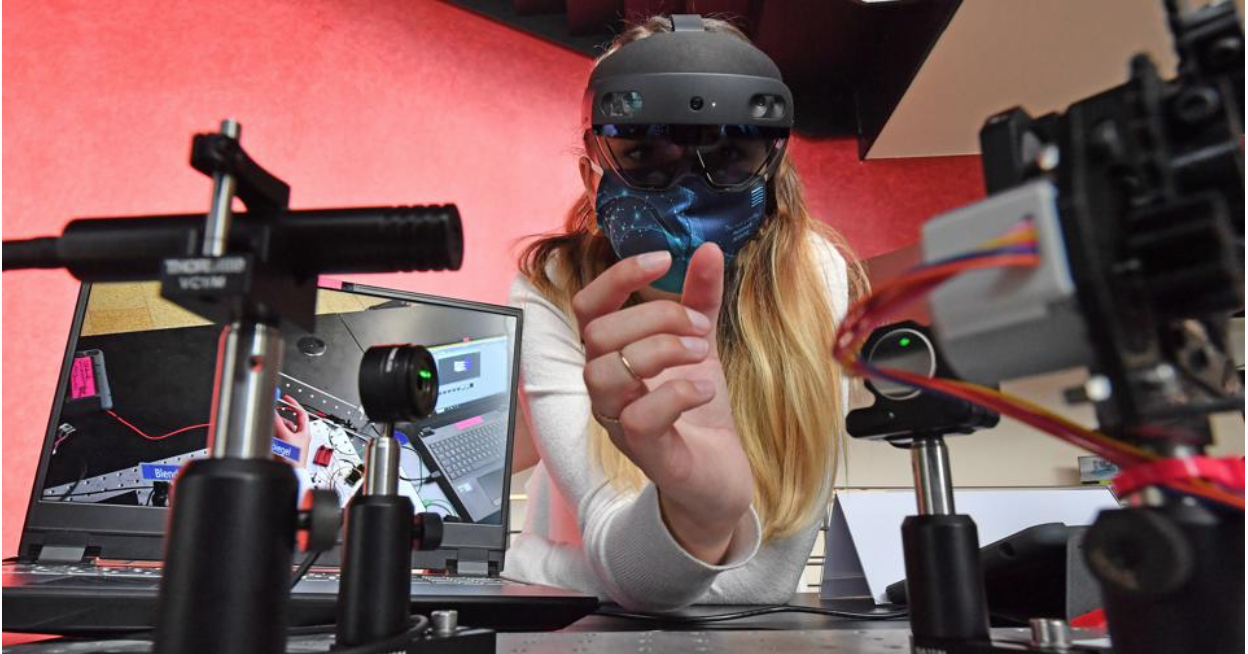How Augmented Reality Will Affect These Four Industries In 2021
Credit: https://www.forbes.com/sites/jenniferhicks/2021/12/28/how-augmented-reality-will-affect-these-four-industries-in-2021/?sh=79dbb42024aa

In April 2020, researchers from the architecture firm Gramazio Kohler partnered with a spinoff from the ETH Zurich robotics lab to develop augmented bricklaying at a winery in Greece. In December 2020, California startup, Mojo vision announced it would work with the Japanese lens manufacturer Menicon to further develop its augmented reality (AR) contact lens prototype.
According to a recent report, the AR market size is estimated to increase from roughly $3.5 billion in 2017 to more than $198 billion by 2025.
Evan Gappelberg, CEO of NexTech AR, says that 2020 catalyzed the adoption of remote interactions.
Gappelberg adds that factors such as 5G for enhanced connectivity, new human holograms/3D modeling, and enhanced mobile capabilities have paved the way for AR and virtual reality (VR) to establish a more effective support system for these industries.
According to NexTech AR, here are the four industries expected to accelerate the use of AR.
eCommerce
AR in eCommerce has the potential to create safer and more fulfilling shopping experiences.
According to Gappelberg, many retailers who have introduced 3D models and AR advertisements found it useful in boosting buyer confidence and pushing purchases across the finish line.
“Customers love these experiences,” said Gappelberg. “AR creates an engaging and delightful customer interaction to online shopping while also adding a better preview option to help you understand what you’re purchasing. When a customer knows what they’re getting before they purchase, it consequently reduces returns and creates more value for eCommerce owners.”
Foodservice
In the food service industry, AR and VR technologies have the power to bring a virtual chef right into the kitchen. Gappleberg says that AR will offer foodservice industry professionals [..] opportunities to connect virtually to showcase skills and products using AR human hologram-led demonstrations and 3D, volumetric objects.
“These efforts will drive sales, customer loyalty and innovation among restaurateurs and vendors at a time when the industry is feeling the impact of COVID-19,” said Gapppleberg.
Gappelberg adds that AR can also showcase the people and process behind how food gets from farm or sea to our plates.
The Center for Food Integrity (CFI) found that 65% of people want to know more about their food origin. With AR, a buyer looking for fresh-caught lobsters could take an AR tour of the boat, guided by a human hologram of the fisherman who will be catching your lobsters.
“Viewers can capture the full process, from the marina to the restaurant. This first-hand look gives them a better understanding of the food and the people behind it, helping to create connections that many of us would otherwise miss and build the stories that sell their food to customers,” added Gappelberg.
Industrial
Gappleberg says the pandemic created a sense of urgency that accelerated the digital transformation of more industrial industries. “As they’ve been forced to accommodate virtual experiences and remote work, they’ve seen first hand how AR and human holograms open new doors for supply chain transparency, global sales and industry-focused education,” said Gappelberg.
“Many of these industries work with large, complex technologies that can now be accessed and viewed in 3D from any mobile device,” added Gappelberg.
Education
EdTech investments are expected to grow by 16.1% a year to reach $181 billion by 2025 due to Covid-19.
“We’re currently working with Ryerson University to build 20 AR labs,” said Gappelberg. “With AR labs in the context of covid and beyond, universities can fill a gap between physical and virtual experiences, go from learning replacement to learning reinforcement and expand their curriculum reach from just their campus to global student populations.